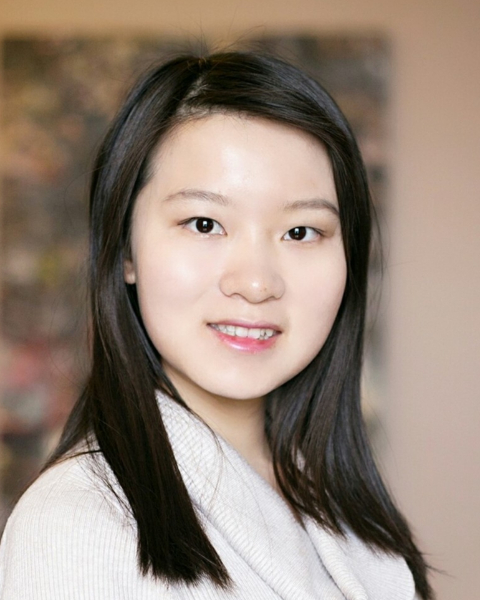SS 43 - Phys 7: Best of Physics
346 - Multi-Contrast MRI Acceleration with K-Space Progressive Learning and Image-Space Self-to-Peer Aggregation
Wednesday, October 2, 2024
10:40 AM - 10:50 AM ET
Location: Room 145

Lianli Liu, PhD
Stanford University
Stanford, CA
Presenter(s)
X. Xing1, L. Yu2, L. Zhu2, L. Xing3, and L. Liu3; 1Stanford University, Palo Alto, CA, 2Department of Statistics and Actuarial Science, The University of Hong Kong, Hong Kong, China, 3Department of Radiation Oncology, Stanford University, Stanford, CA
Purpose/Objective(s): Multi-contrast MRI plays a vital role in accurate target delineation and treatment response evaluation during radiotherapy. This work aims to optimize multi-contrast MRI by integrating features across different contrasts and utilizing an easily obtained modality to guide high-quality reconstruction of target modalities from noisy and sparse samples. Materials/
Methods: We propose a novel multi-contrast MRI reconstruction framework, which cascades a k-space learning network and an image space aggregation network to exploit features in both sensor and image domains. To deal with the imbalanced magnitudes of different frequency components in k-space, we propose a Low-to-High Frequency Progressive (LHFP) learning strategy. The network first recovers the low-frequency component and then emphasizes the high-frequency learning by reducing the loss weight of the low-frequency component. The low-high frequency boundary is adaptively estimated by a mask predictor module, which is optimized together with the k-space learning network. The network-learned k-space data are reconstructed to images and fed into the image domain network for further enhancement. To capture global dependencies in the image domain, we propose a transformer-based Self-to-Peer Aggregation (SPA) method to integrate features from multi-contrast MRI and improve the joint reconstruction accuracy.
Results: We evaluate our method on a multi-contrast MRI dataset, which contains both T1-weighted (T1WI) and T2-weighted (T2WI) MRI of brain tumor patients. We conduct experiments on two settings: 1) T1WI-guided 4-fold acceleration of the T2WI MRI, with only the reconstruction accuracy of T2WI evaluated; 2) T1WI-guided 4-fold acceleration of the T2WI MRI with low-field noise, where both reconstruction accuracies of T1WI and T2WI are evaluated. Our method leads to a peak-signal-to-noise (PSNR) improvement of 9.69 dB, 16.94 dB, and 11.16 dB for the T2WI 4X acceleration, T1WI low-field denoising, and low-field T2WI 4X acceleration, respectively. Moreover, our method significantly outperforms existing multi-contrast MRI reconstruction methods (K-DCNN, MINet, MTrans, MCCA).
Conclusion: Through dual domain learning of k-space and image features, high-quality multi-contrast MRI can be obtained from noisy and sparse samples to support radiation treatment planning and follow-up. By exploiting global feature dependencies across different contrasts, improved robustness to noise and under-sampling artifacts can be achieved.
Purpose/Objective(s): Multi-contrast MRI plays a vital role in accurate target delineation and treatment response evaluation during radiotherapy. This work aims to optimize multi-contrast MRI by integrating features across different contrasts and utilizing an easily obtained modality to guide high-quality reconstruction of target modalities from noisy and sparse samples. Materials/
Methods: We propose a novel multi-contrast MRI reconstruction framework, which cascades a k-space learning network and an image space aggregation network to exploit features in both sensor and image domains. To deal with the imbalanced magnitudes of different frequency components in k-space, we propose a Low-to-High Frequency Progressive (LHFP) learning strategy. The network first recovers the low-frequency component and then emphasizes the high-frequency learning by reducing the loss weight of the low-frequency component. The low-high frequency boundary is adaptively estimated by a mask predictor module, which is optimized together with the k-space learning network. The network-learned k-space data are reconstructed to images and fed into the image domain network for further enhancement. To capture global dependencies in the image domain, we propose a transformer-based Self-to-Peer Aggregation (SPA) method to integrate features from multi-contrast MRI and improve the joint reconstruction accuracy.
Results: We evaluate our method on a multi-contrast MRI dataset, which contains both T1-weighted (T1WI) and T2-weighted (T2WI) MRI of brain tumor patients. We conduct experiments on two settings: 1) T1WI-guided 4-fold acceleration of the T2WI MRI, with only the reconstruction accuracy of T2WI evaluated; 2) T1WI-guided 4-fold acceleration of the T2WI MRI with low-field noise, where both reconstruction accuracies of T1WI and T2WI are evaluated. Our method leads to a peak-signal-to-noise (PSNR) improvement of 9.69 dB, 16.94 dB, and 11.16 dB for the T2WI 4X acceleration, T1WI low-field denoising, and low-field T2WI 4X acceleration, respectively. Moreover, our method significantly outperforms existing multi-contrast MRI reconstruction methods (K-DCNN, MINet, MTrans, MCCA).
Conclusion: Through dual domain learning of k-space and image features, high-quality multi-contrast MRI can be obtained from noisy and sparse samples to support radiation treatment planning and follow-up. By exploiting global feature dependencies across different contrasts, improved robustness to noise and under-sampling artifacts can be achieved.
Abstract 346 – Table 1
| |||||||||||||||||||||||||||||||||||||||||||||||||||||||
